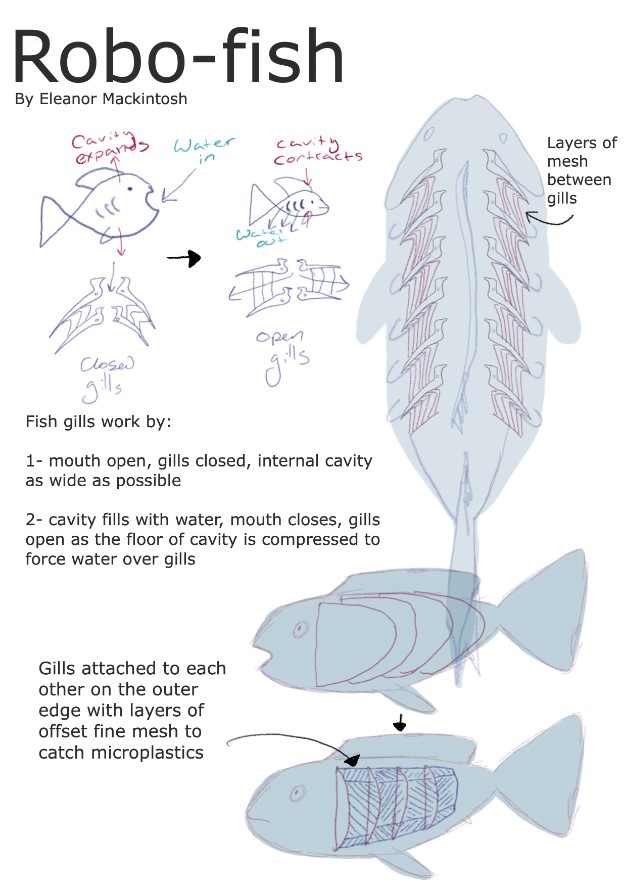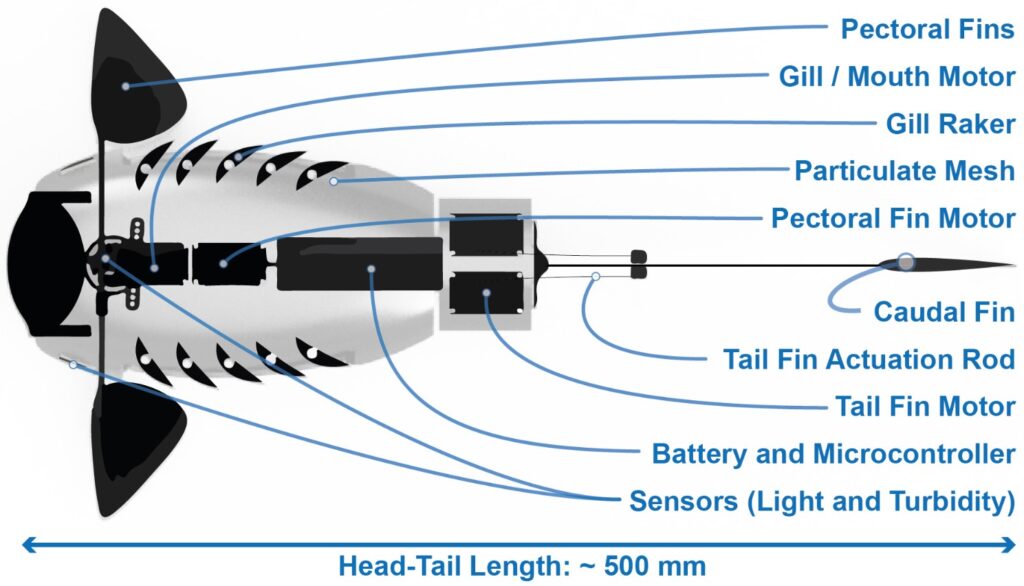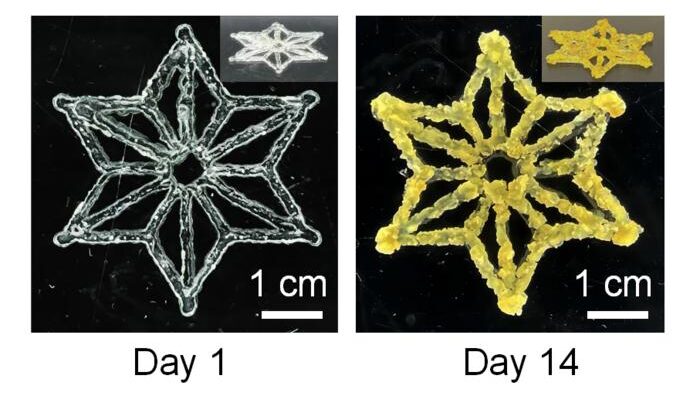By Charles Carter, 02/11/22
The Natural Robotics Contest built a prototype of this year’s winning entry from Eleanor Mackinstosh: Gillbert, a bionic fish that eats microplastic by filtering it from ingested water using mesh gills.
Eleanor’s idea was to mimic how fish swim and extract oxygen from water to help clean up microplastic pollution in the oceans and waterways.
The annual Natural Robotics Contest invites ideas for bioinspired robots, with the winning entry brought to life by senior roboticists.
It’s organised by robotics lecturer Dr. Rob Siddall from the University Surrey in collaboration with engineers from EPFL, Queen Mary University, Royal College of Art and Technical University Munich.

How does it work?
The 3D-printed bot has two main sections, a mouth and cavity which is flooded with water and a water tight tail.
A fine mesh covers synthetic gills on each side of its body allowing water to pass through as it swims but collecting microplastic particles up to 2mm.
Four motors drive two pectoral fins and a tail fin allowing Gillbert to move through the water.
Just like in fish, the pectoral fins control the steering – up, down, left and right – and the tail fin provides forward thrust.

What are the potential benefits?
The University of Surrey are going to use the bot in ongoing projects to collect samples of microplastics from waterways and analyse them in the lab.
With some further modficiations like an opening and closing mouth and wireless or autonomous control the bot could collect samples at specific locations too, including different depths.
Perhaps deploying millions of giant Gillberts over many years could also start to collect and remove microplastics from our oceans?
Questions for you. Comment below
- First thought that comes into your head?
- Pros and cons according to you?
- Other applications of this approach?
- What could this be combined with?
Links
https://www.naturalroboticscontest.com/
https://arxiv.org/abs/2210.11449




Will there be a kill rate as predator fish try to eat Gilbert?
Does (large) Gilbert become a potential piece of rubbish in ocean and so is a bigger problem than the one it is solving?
What powers Gilbert as it will run out underwater…then see above!!